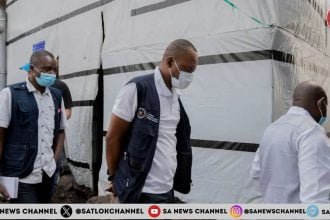In recent weeks, China has reported a significant rise in respiratory infections caused by the Human Metapneumovirus (HMPV). This development has triggered global concern, with countries closely monitoring the situation for any spillover risks. HMPV, though not a new virus, has gained attention due to its sudden spike in cases, particularly in China’s northern provinces.
According to Chinese health authorities, the majority of infections are concentrated among children under 14, with symptoms ranging from mild cold-like conditions to severe respiratory complications such as bronchiolitis and pneumonia. Overburdened hospitals and extended waiting times are evident, reflecting the strain on healthcare resources.
Understanding HMPV: A Respiratory Menace
First identified in 2001, HMPV is part of the Pneumoviridae family. It spreads through respiratory droplets and contact with contaminated surfaces, making crowded indoor spaces during winter especially conducive for transmission. The virus primarily causes upper and lower respiratory tract infections, with severe cases noted in children, the elderly, and those with weakened immune systems.
While no specific antiviral treatment or vaccine exists, HMPV infections are typically managed with supportive care, including hydration, fever management, and, in severe cases, oxygen therapy.
China’s Response: Enhanced Surveillance Measures
China’s National Disease Control and Prevention Administration has launched a pilot program to monitor pneumonia cases of unknown origins. The goal is to detect and manage emerging respiratory threats more effectively. This initiative follows lessons learned from the COVID-19 pandemic, where early detection proved critical in mitigating global spread.
Also Read: China Approves World’s Largest Dam on Brahmaputra: A Mega Project Sparks Concerns
The government has also issued advisories promoting preventive measures, such as avoiding crowded places, maintaining hand hygiene, and using masks in public areas.
India’s Proactive Stance
In response to the developments in China, India’s Ministry of Health and Family Welfare has assured citizens that the current situation poses no immediate threat. Dr. Atul Goel, Director General of Health Services, emphasized that the country’s surveillance systems have not detected any unusual spike in respiratory infections.
The National Centre for Disease Control (NCDC) has bolstered its influenza and respiratory illness monitoring systems. Regular advisories have been issued to hospitals and healthcare facilities to report any atypical cases promptly.
Health officials also reaffirmed the importance of vaccinations against other respiratory illnesses like influenza and COVID-19, as these infections could exacerbate symptoms in co-infected individuals.
Public Advisory: Staying Safe During Winter
Indian health authorities are urging citizens to adopt preventive measures to reduce the risk of respiratory infections:
- Hand Hygiene: Wash hands frequently with soap and water.
- Avoid Crowded Spaces: Limit time in congested areas during peak infection seasons.
- Mask Usage: Wear masks in public, especially in indoor settings.
- Stay Informed: Follow updates from credible health sources.
Global Context: A Need for Vigilance
The resurgence of HMPV cases in China highlights the importance of robust global health surveillance systems. The World Health Organization (WHO) has recommended enhanced monitoring of respiratory infections worldwide, especially in regions with increased travel or trade with affected areas.
Experts believe that while HMPV has been a known pathogen, the post-COVID-19 era has created conditions conducive to increased viral transmission. Reduced immunity due to prolonged isolation and the return to normal social activities could be contributing factors.
Lessons Learned from COVID-19
The current focus on HMPV underscores the global community’s resolve to avoid the mistakes of delayed action witnessed during the early days of the COVID-19 pandemic. Rapid response measures, transparency in data sharing, and public adherence to safety protocols remain crucial in managing such outbreaks.
Conclusion
China’s struggle with HMPV serves as a reminder of the persistent challenges posed by respiratory viruses. While India is not currently at risk, vigilance and adherence to preventive measures are necessary to ensure the safety of its population.
The global health community, meanwhile, continues to emphasize the importance of collaboration, research, and preparedness to combat both known and emerging infectious diseases. For individuals, simple actions like handwashing, wearing masks, and staying informed can go a long way in minimizing risks.
All in all, the only way out to get rid of not only the natural calamities but these kinds of incurable disasters is to take refuge of Saint Rampal Ji Maharaj. He only provides the authentic way of worship that for sure is the cure of these disasters. To know more about Saint Rampal Ji Maharaj visit www.jagatgururampalji.org









